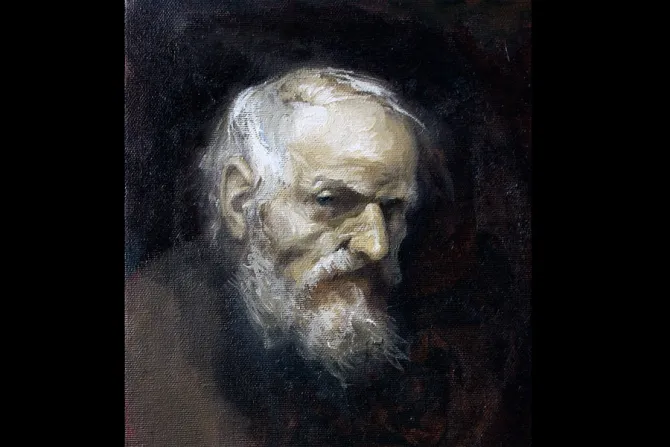Washington, D.C., Mar 24, 2015 / 03:25 am
Can a portrait of a human face evangelize? Curators of a brand-new traveling art exhibit answer a resounding "Yes."
"There is really great Christian art being made today and we need to promote and support it," stated Terrence McKeegan, an organizer of the "One Faith: East and West" exhibit featuring contemporary Christian artists from three continents.
"Figurative art has been a common denominator across all cultures, pagan or Christian, until very recently, and the attack on figurative art is really an attack on humanity itself," he added.
The exhibit seeks to recover a classical, Christian view of the human person made in God's image, rather than a "bizarre" or "grotesque" view of man in the artist's image, seen all too often in the 20th century, say organizers.
The exhibit debuted March 19 in Beijing's Wangfujing Cathedral, and will travel to Moscow's Pokrovsky Cultural Center in mid-April, followed by two weeks at New York University's Catholic Center in June. The tour is global and so is the art, an "innovative and ambitious" undertaking, said McKeegan.
East meets West in the exhibit, with artists hailing from nine countries on three continents. They are Roman and Byzantine Catholic, Russian and Romanian Orthodox. The art varies from oil figure paintings to icons to sculpture, yet the different pieces share the common goal of recovering the traditional sense of the human figure.
Art, understood through the lens of St. John Paul II, shows the human person as a figure made in God's image, to which the only response is love, explained Carl Fougerousse, one of the featured artists, at a private preview for the exhibit on Mar. 4.
As society advanced technologically, men sought to control and manipulate nature, he explained, citing C.S. Lewis' work, The Abolition of Man.
Artists reflected this change by moving from an objective, traditional portrayal of the human person to manipulating and distorting the human figure as they saw fit, experimenting with the "bizarre" and the "grotesque."
The exhibit seeks to recover the lost sense of the human figure as portrayed by classical and Renaissance artists. It is organized by the Language and Catechetical Institute in Gaming, Austria, the mission of which is to spiritually form young men and women to rebuild Christian civilization in countries lost to secularism or Communism.
In this sense of evangelism, McKeegan hopes the art will "bring people into an encounter with the faith and Christ through beauty."
"[A]rt has the ability to convey in a powerful way the truth about what it means to be human, what it means that we are created and redeemed by God," stated the exhibit's curator Jennifer Healy.
Some of the art is overtly religious – icons of Jesus, Mary, and different saints, and paintings of Scripture like the parable of Prodigal Son and Jesus forgiving the adulterous woman. Some of the art simply shows the human figure. Yet it is all rooted in the view of man as made in the image and likeness of God, Healy said.
"The idea behind the theme of the exhibition is that whether you were born in Shanghai or New York, whether you speak Russian or English, whether you use oil paint or egg tempera, it is the same Jesus Christ who is Lord, the same Jesus who each artist here believes in."



